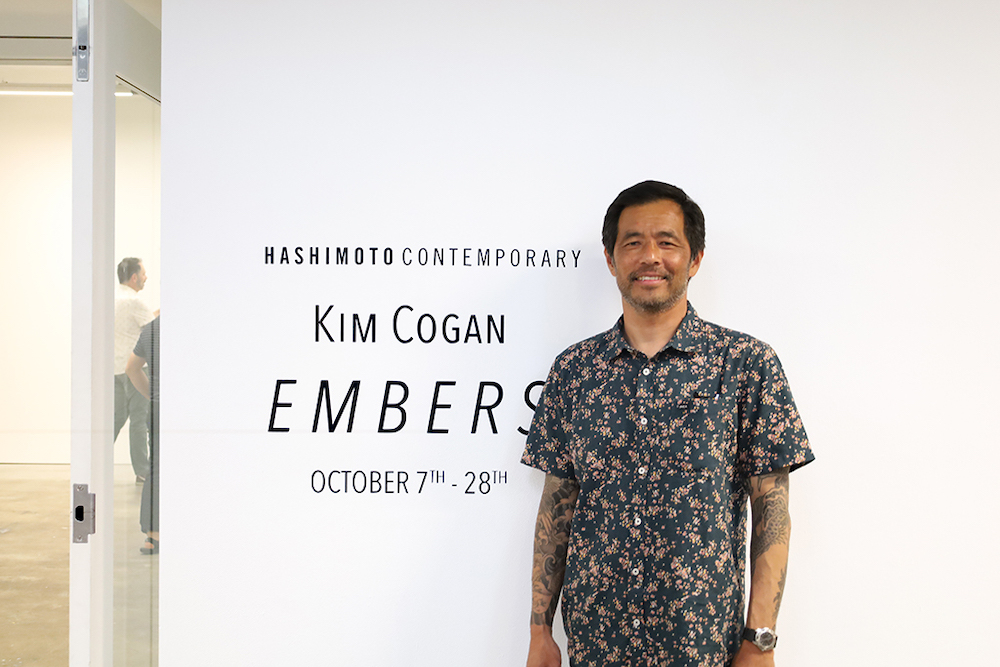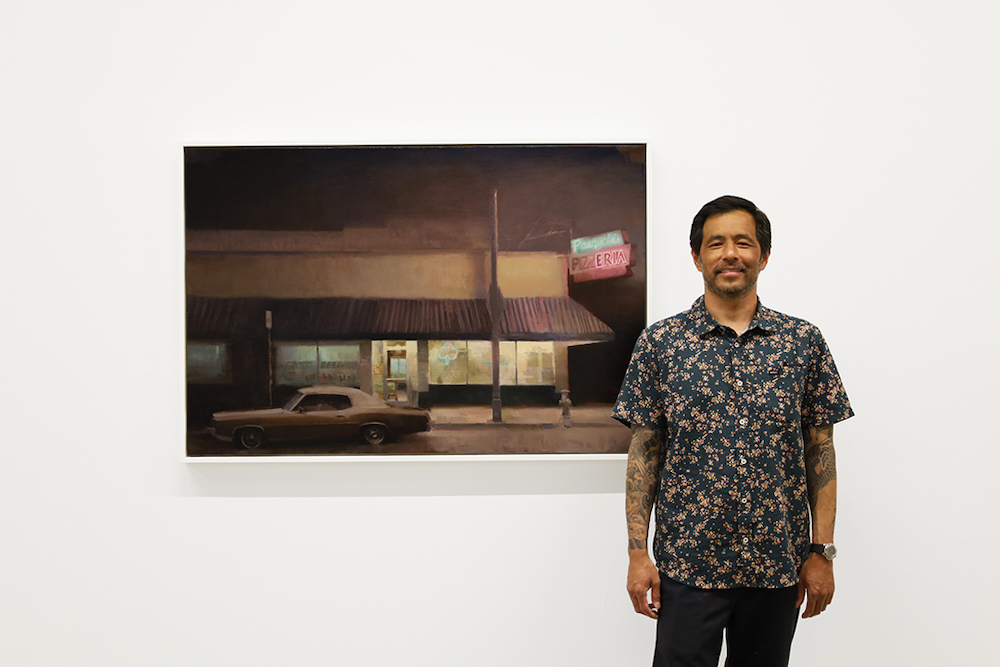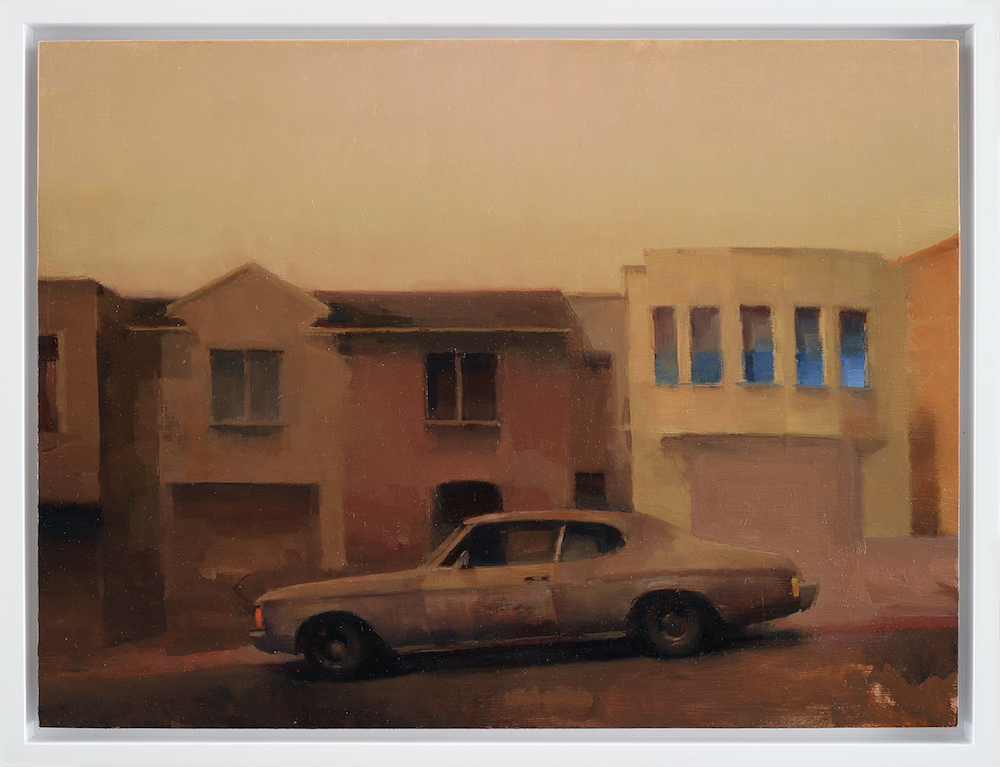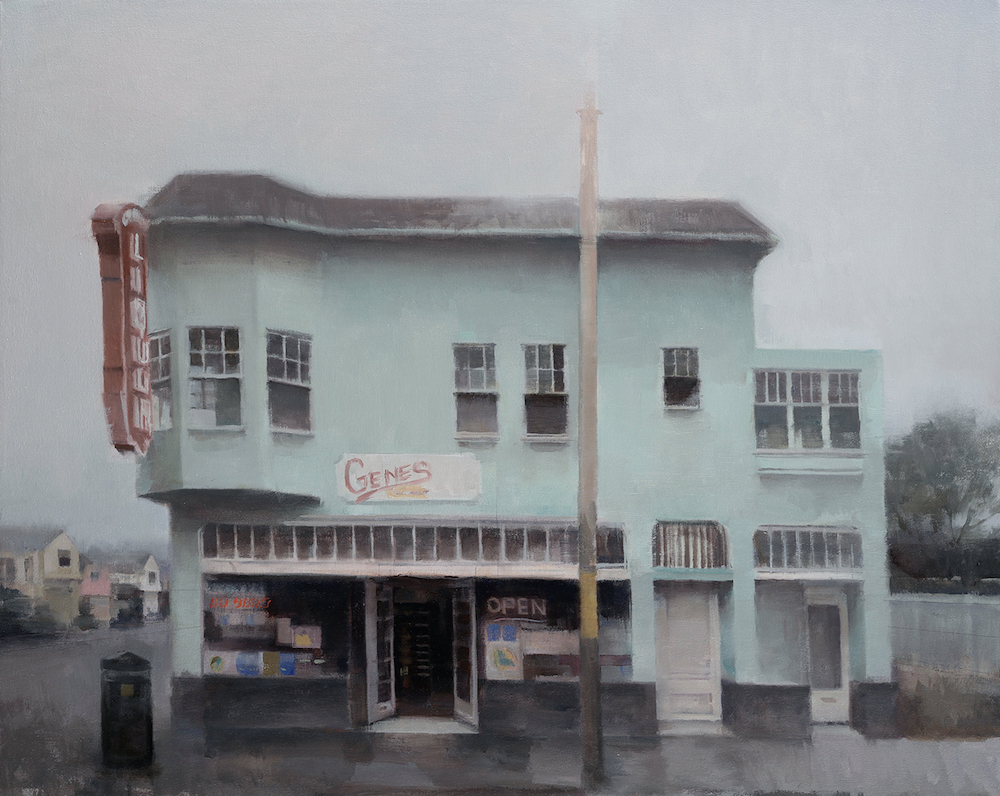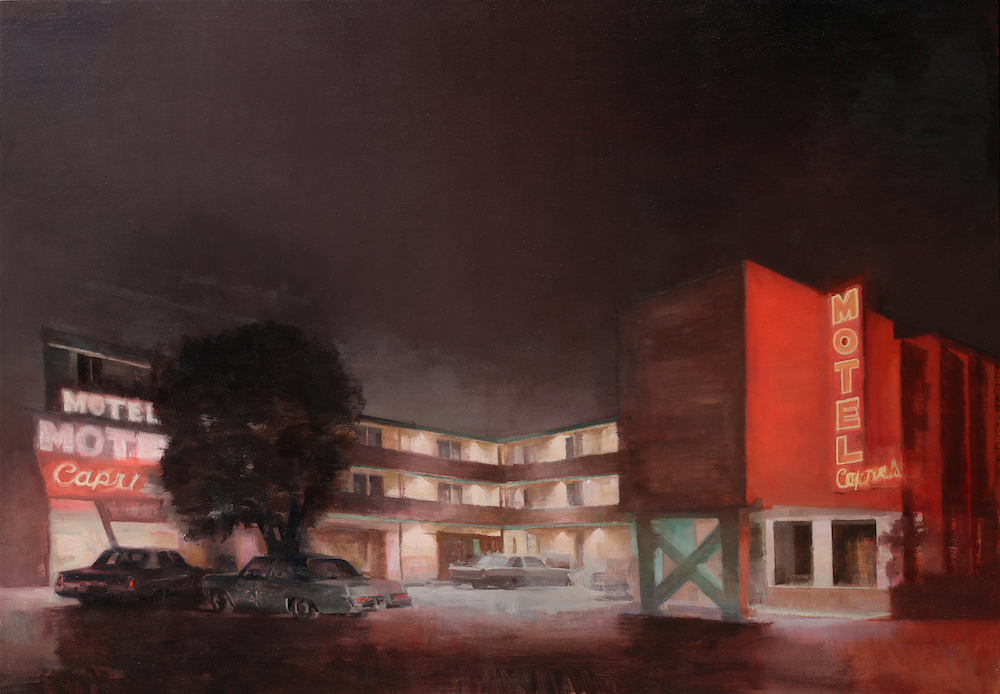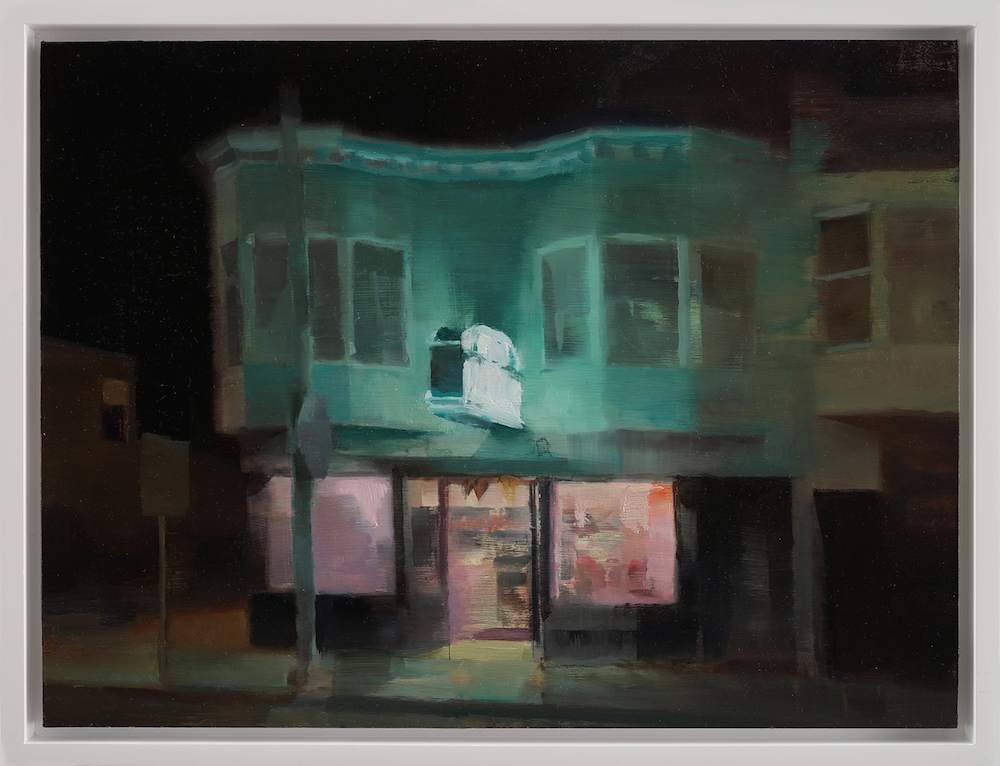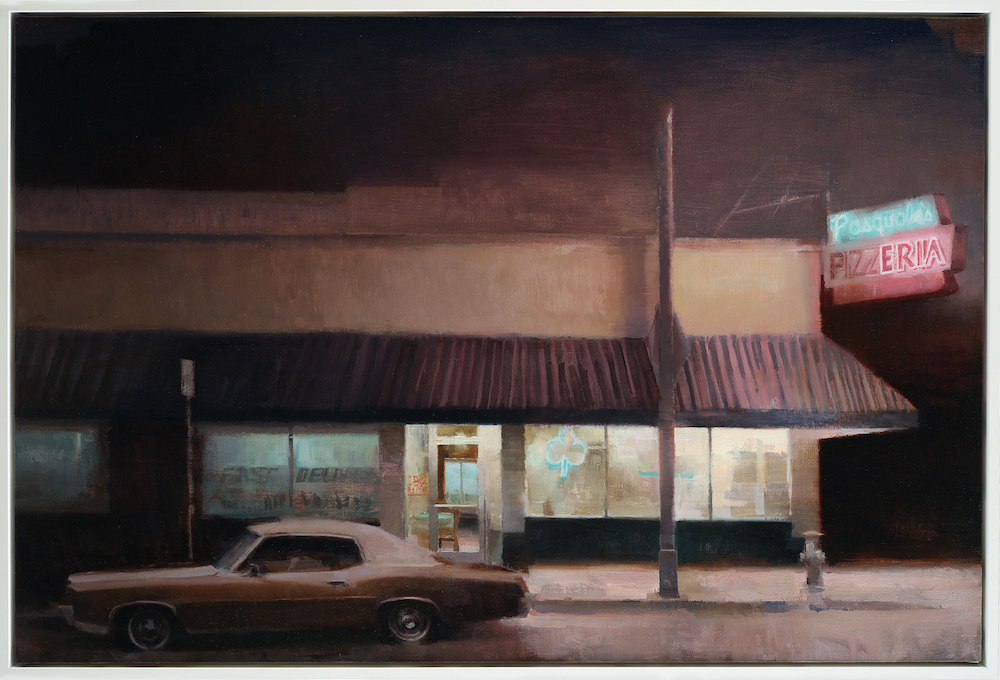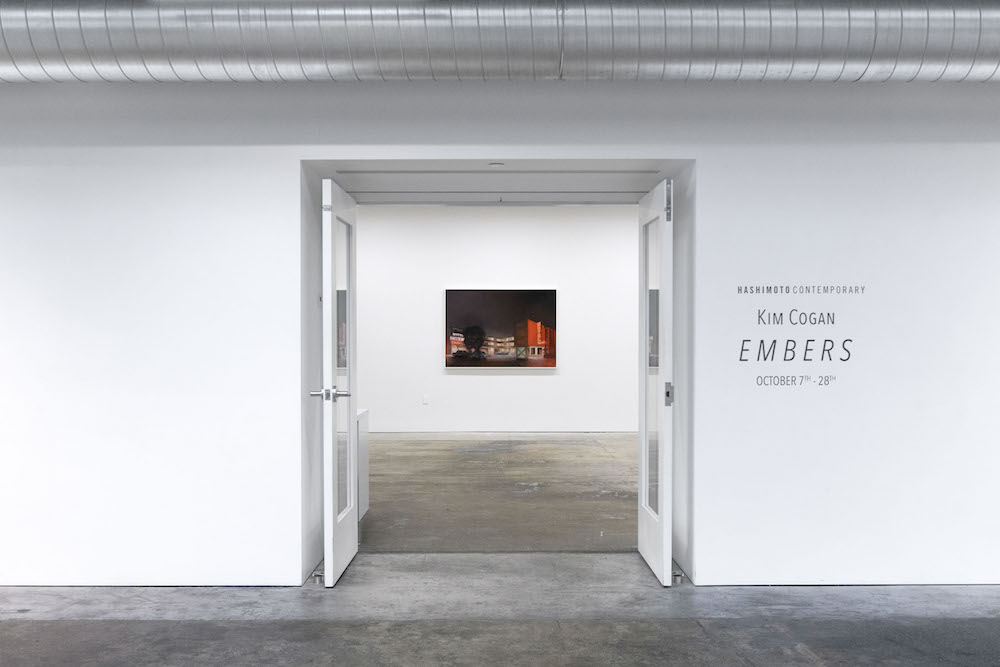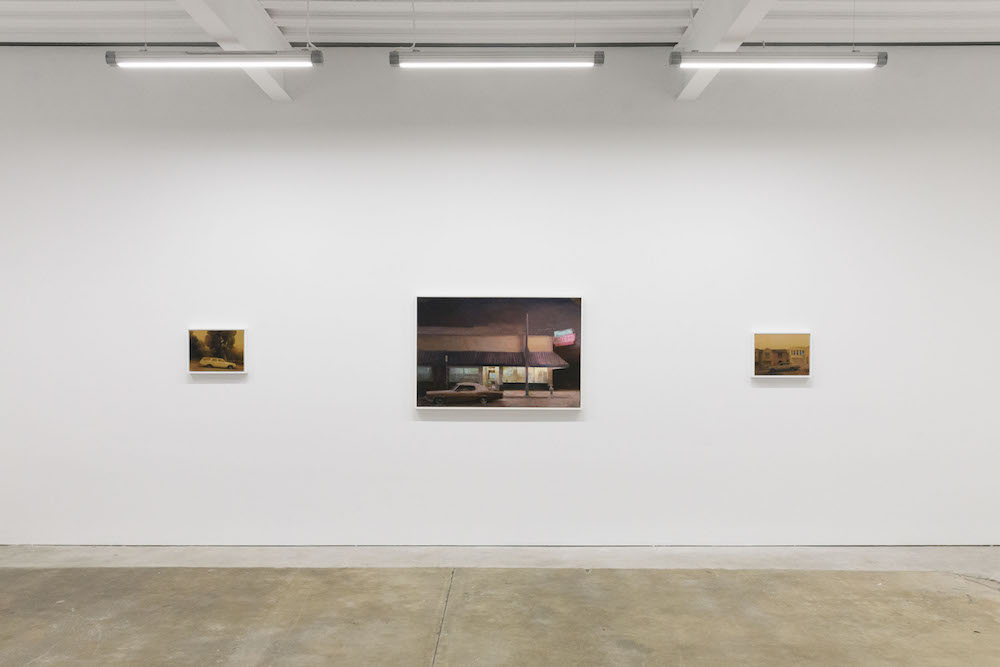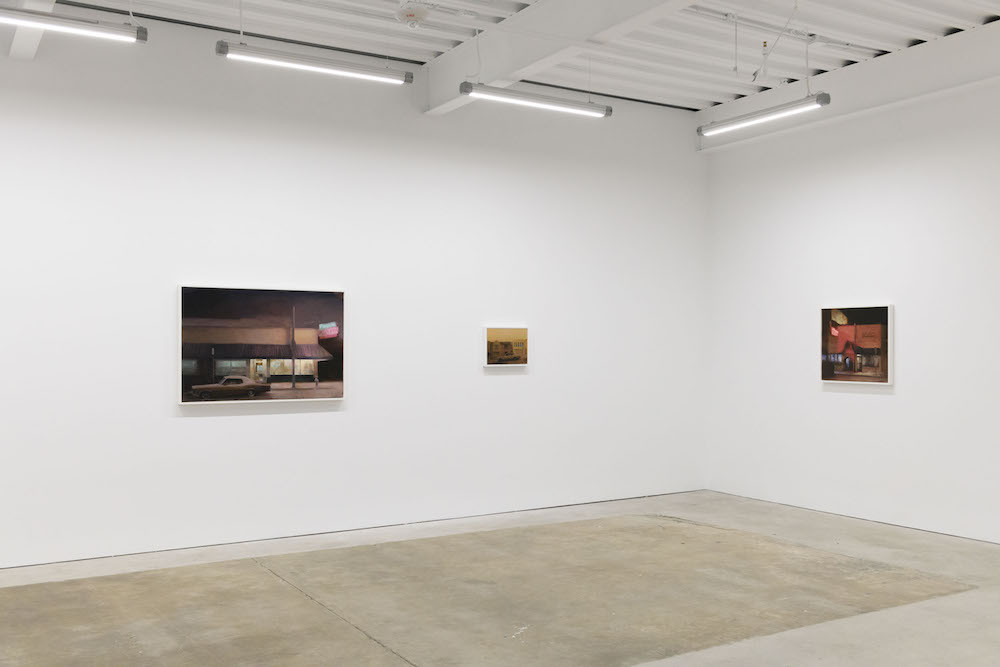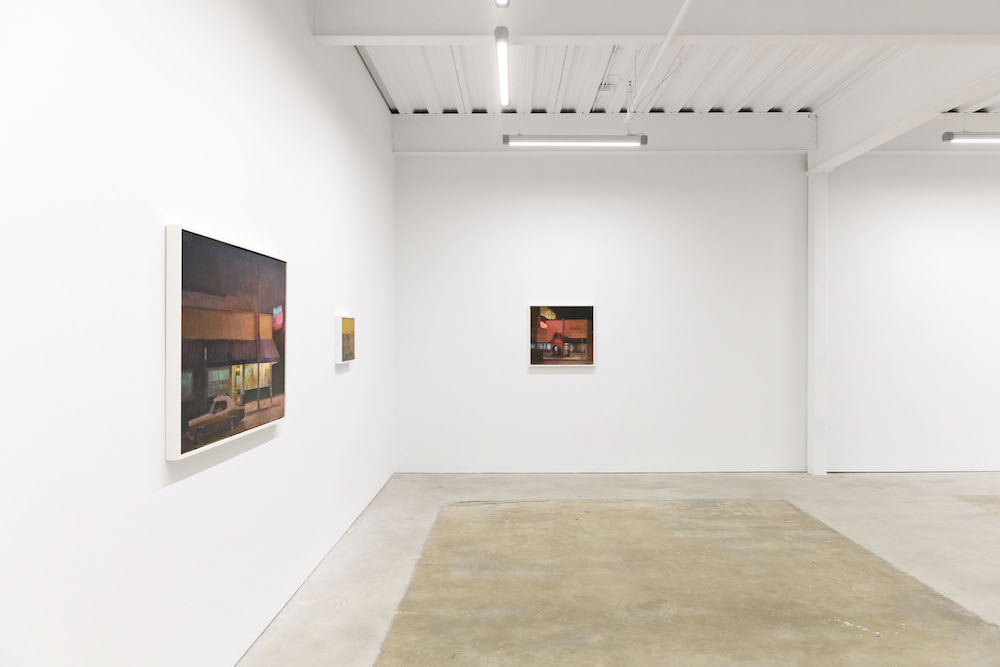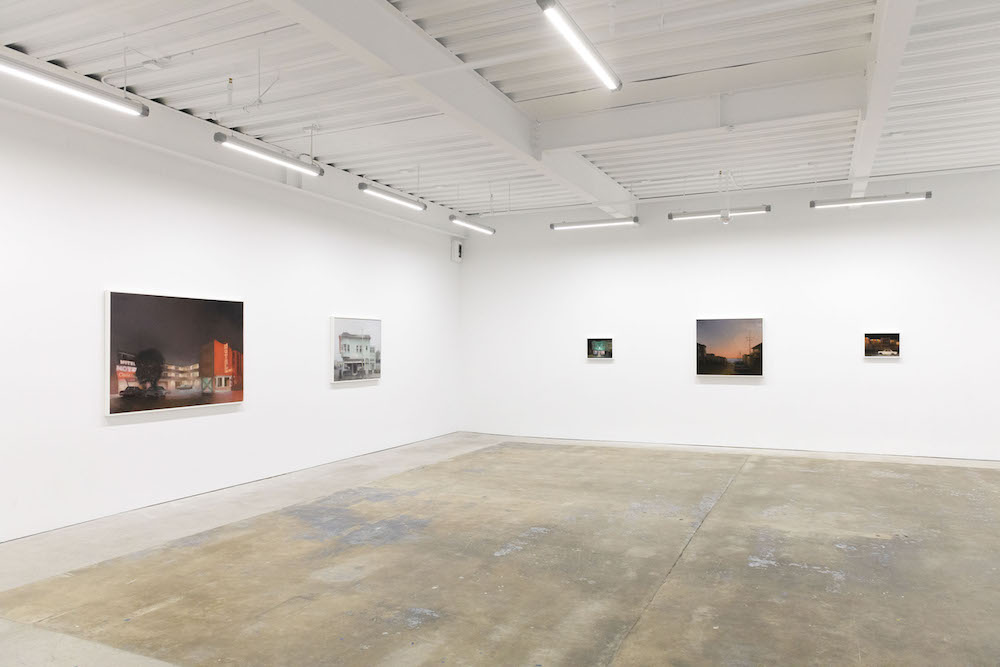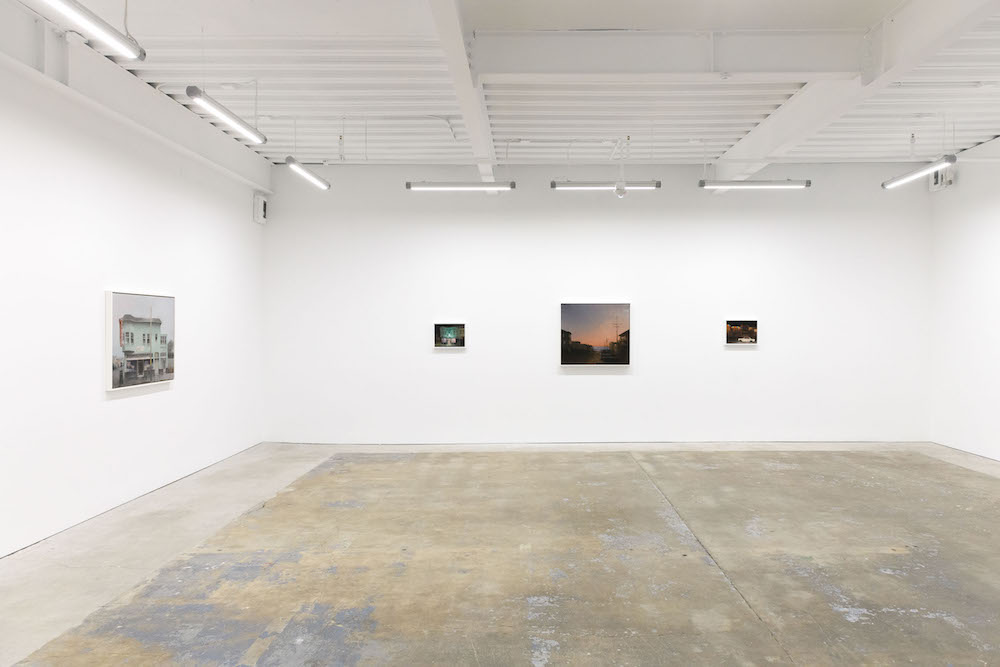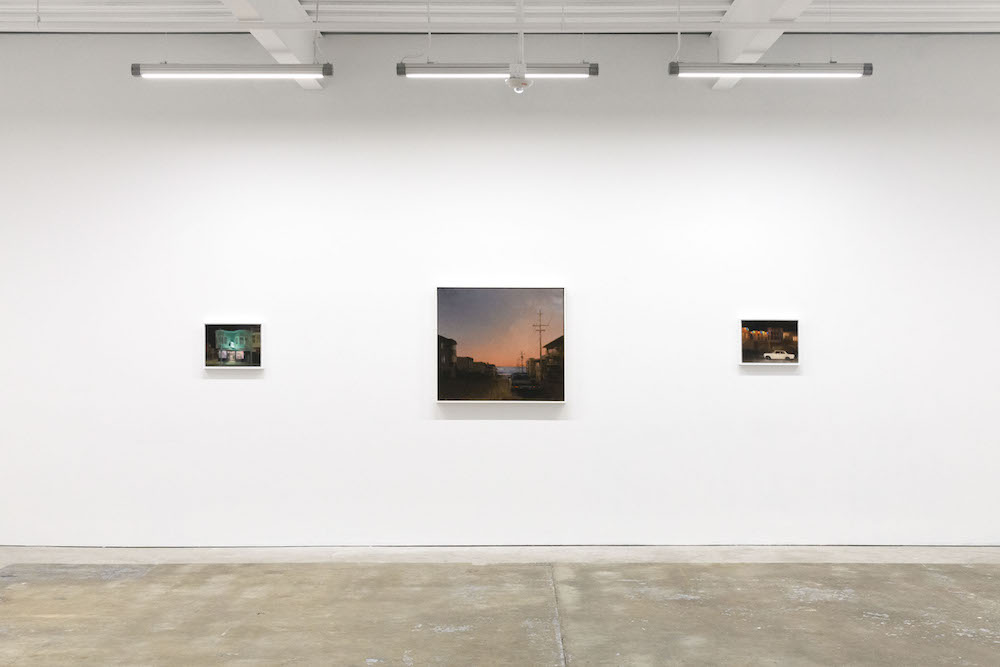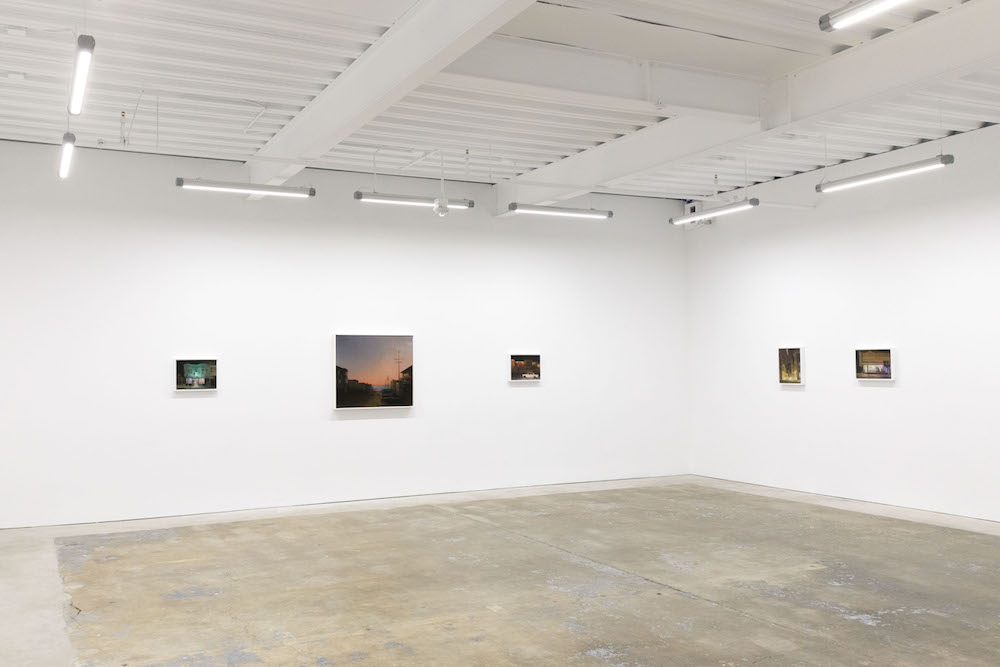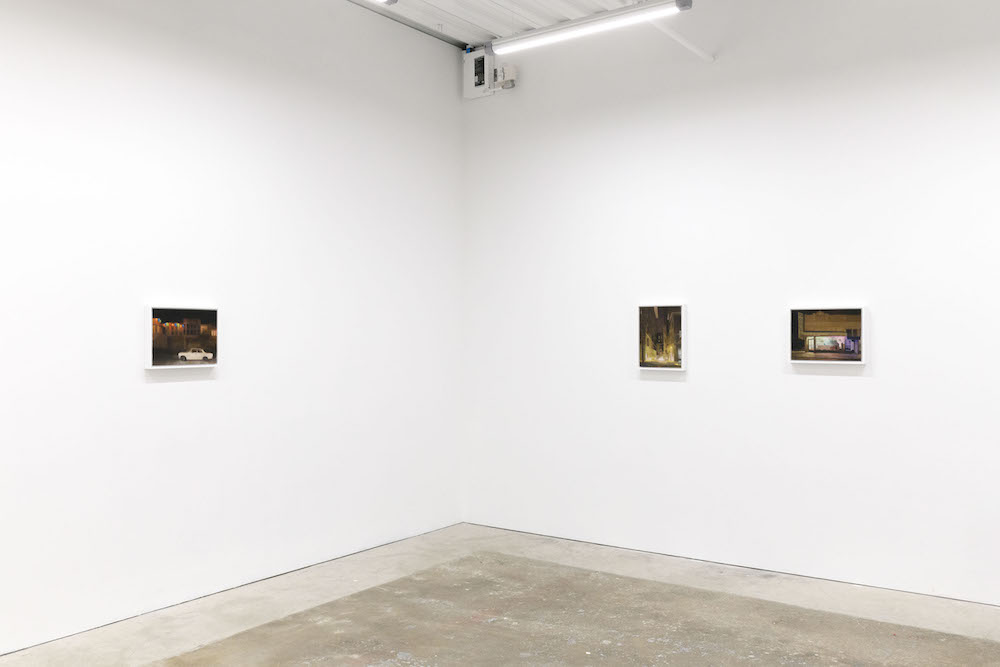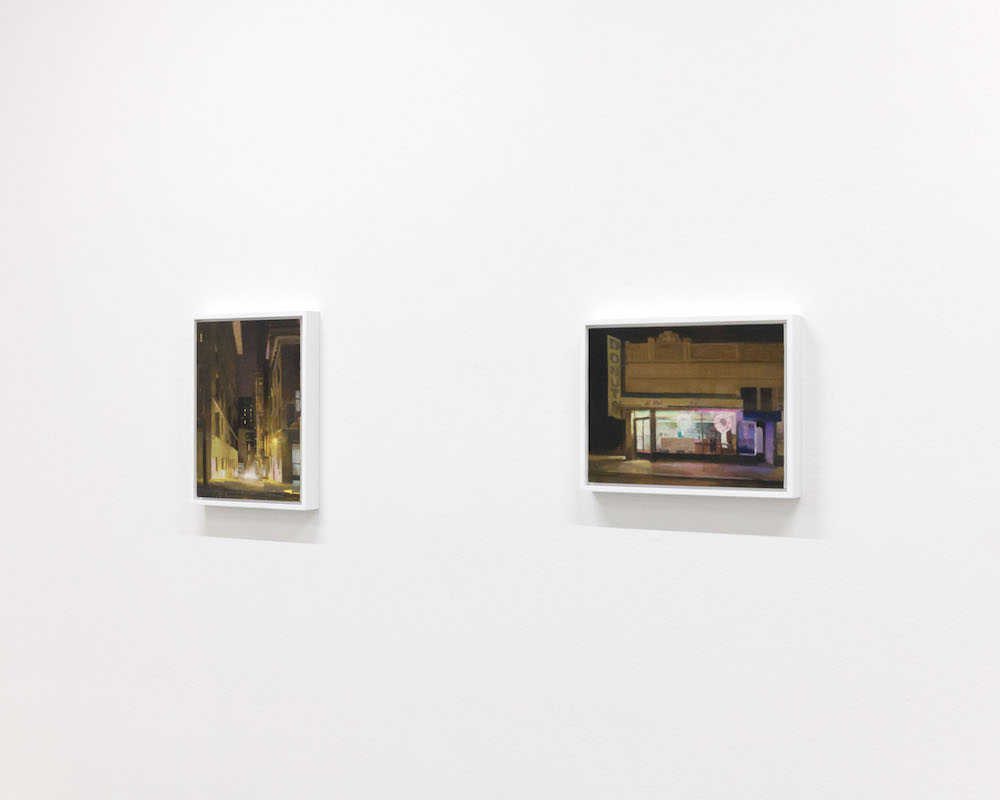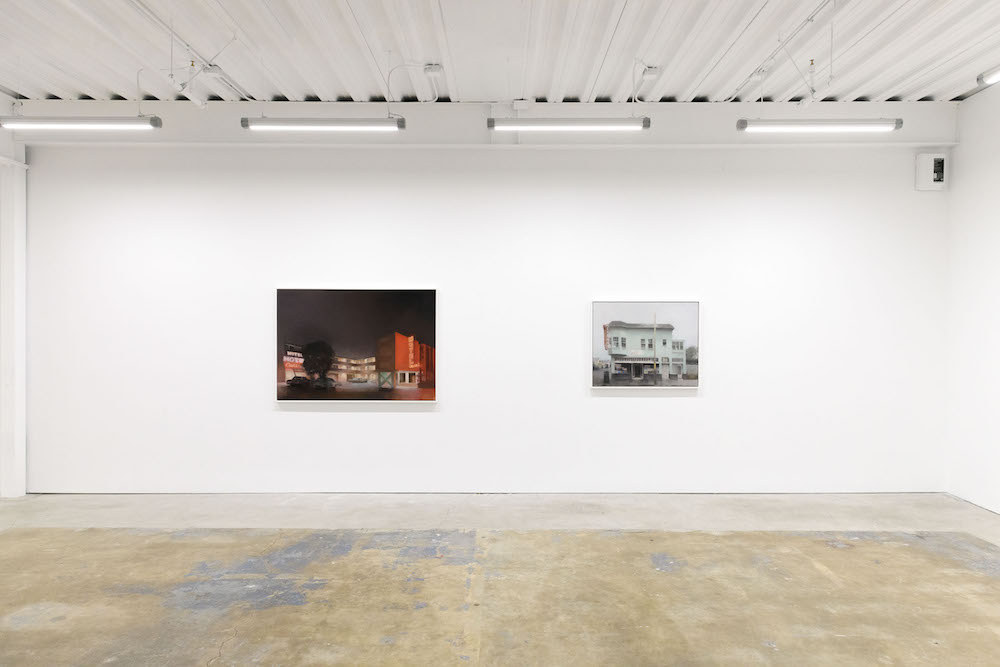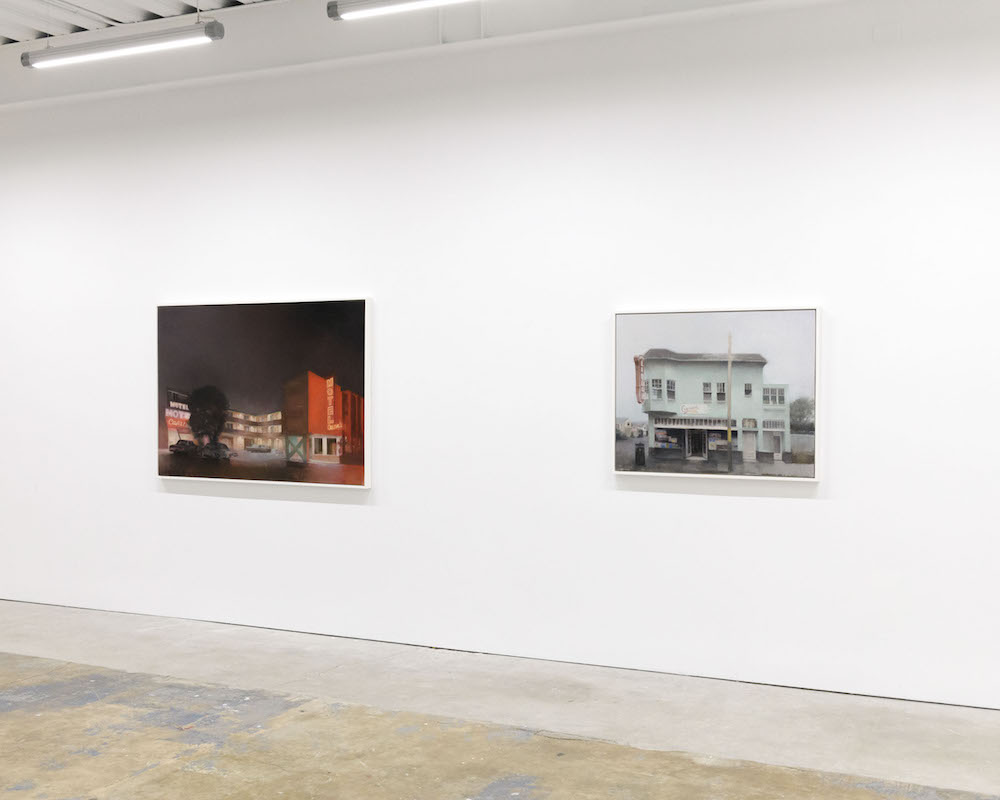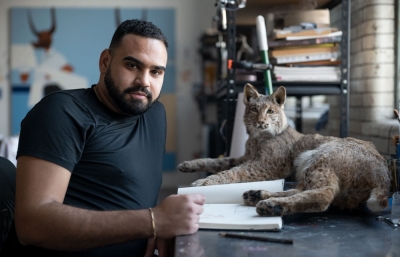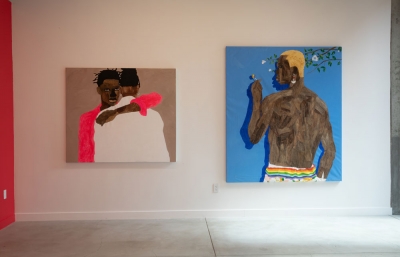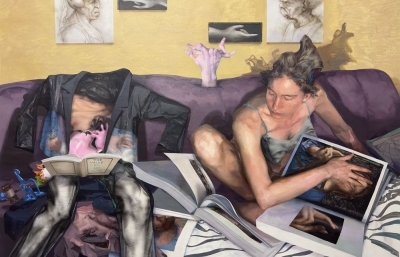You might think you’ve seen all of San Francisco until you see Kim Cogan’s paintings. Over the past quarter of a century, Cogan has been capturing the character of often unnoticed or unsung scenes of San Francisco through his masterful oil paintings. Like many other American cities, San Francisco has recently seen massive population and city-scape changes that have made sensational news headlines, transforming the city into a symbol of American collapse. But to many (including Cogan), it’s still home. Attempting to capture the beauty in isolation and harmony in change, the painter’s current solo exhibition, Embers at Hashimoto Contemporary San Francisco, shows light and life within the city’s fixed relics.
Before the opening of his solo show, Kim spoke to Hashimoto Contemporary’s Katherine Hamilton about how he has changed as a painter in an ever-evolving art scene, and weighed in on some highly contested favorite local spots.
Katherine Hamilton: Kim, you’ve been a painter for quite a while now. How do you feel your work has changed, or the perception of your work has changed since you began?
Kim Cogan: For anyone who has followed my work over the last 25+ years, I think it’s evident that I’m constantly drawn to painting what’s around me and what catches my eye. A lot of my work is grounded in my experiences in and around cities, especially San Francisco, where I live. But really, any place I travel to can be a source of inspiration. As someone who works in oils, I am still completely fascinated by the medium. Whether painting a city scene, still life, or portrait, it never ceases to amaze me what oils can do.
Over the years, I would say that a sense of nostalgia and storytelling has crept up more in my work. I think that stems from my desire to create a certain mood in my paintings, but it also reflects how I experience my surroundings and the emotional tone I want to convey.
You’ve also been a part of the Bay Area art scene since the turn of the internet, and many of your works consider how this place has changed and will continue to change over the years. What is one thing you’ve noticed has changed in the Bay Area art scene since you entered it? What’s one thing that has stayed the same?
It’s a completely different landscape from when I started. A lot of galleries are no longer around, even though new ones have emerged. The biggest change, of course, is how art is consumed. It used to be that you had to physically go to galleries to see the latest work or find new artists. Now, all of that revolves around social media—a beast that is impatient and hungry, a bottomless pit of instant gratification. As an artist, you have to be savvy with these platforms because they are here to stay. But for me, seeing art in person, experiencing it up close, talking with the artist—the value of that will never disappear. And thankfully, the Bay Area galleries that are still around haven’t stopped showcasing the talent of the local scene.
The palette in Embers, your current solo show at Hashimoto Contemporary San Francisco, is much darker than previous work we’ve seen from you. Many of these sites are depicted in the nighttime glow of a neon sign, at the peak of dawn, or just after dusk. What’s pulling you to these darker hues?
I don’t think I intended the work to be darker for this show. I’ve done a lot of nighttime paintings over the years. The truth is oil painting is better suited for rich colors and dramatic lighting, which is what I’m drawn to. Every scene, no matter the time of day, is different, and I try to emphasize its unique qualities to make the imagery most expressive. I have yet to pull off painting a night scene in a high-key palette.
About your last show with Hashimoto Contemporary, writer Theadora Walsh wrote that your work “has an orphic quality: It looks simultaneously to the past and the future.” Rather than depicting snapshots or a moment in time in your paintings, you revisit a scene repeatedly to understand its boundless essence. Do you think about a specific site’s future when creating these scenes?
Theadora’s article was a great piece, and I loved her interpretation of my work. I do like to revisit scenes I’ve painted in the past and will sometimes paint them again in different conditions. I guess you could say painting a place is my way of preserving it for the future. But I don’t think I’m a fortune teller. Although, the last time I walked around Westfield Mall downtown (or what was then called Westfield), I remember wondering if department stores would become a thing of the past. And look at where we are now. I’m witnessing the city changing and developing, and I can’t help thinking about all the memories I have of these places. It’s like I’m caught between the past and present, and it is kind of haunting. I am optimistic, though, that there will be some sort of rejuvenation of downtown San Francisco.
Given that you paint neighborhoods or businesses that are often dear to people’s hearts, and your treatment of these subjects has deeply affective qualities, has anyone ever had an extreme reaction to one of your works?
Yes, it happens frequently that people will reach out to tell me about their own memories of a certain place. I’ve also met a lot of the business owners of the places I’ve painted. Once, I painted a convenience store on a corner that I would pass by a lot on my way home, and when I painted it (from old photos), it had already been closed for several years. The owner’s family heard about the painting somehow and gave it to their father, the original owner. How special is that!?
I want to discuss some of your painting influences. In a 2005 interview with the former San Francisco art blog Fecal Face, you mentioned how much you would love to paint as “masterfully as Van Gogh or Rembrandt someday.” You can certainly give the impression of a moment or mood as Van Gogh does or the hazy dreaminess of a Rembrandt. Do you feel you’ve grown as a painter since making this statement?
Wow, you really went back in time! I do remember saying that; yes, I am confident I’ve grown as a painter since then. I will always have respect for masters like Van Gogh and Rembrandt. But I think what I was trying to say was less about the aspiration to paint like someone else and more about the skill of mastering a craft, developing your own voice, and communicating your vision in an honest and genuine way.
Of course, you’ve mentioned van Gogh or Rembrandt, as well as the Bay Area Figurative painter Richard Diebenkorn, as painters you have looked to for technical and stylistic inspiration. Do you see yourself in direct conversation with painters from history?
I’m not an art historian, so it’s hard for me to think about what a conversation with those painters would be like. All I can say is that those painters continue to inspire me, each for different reasons.
What do you hope your legacy will be as a painter?
I’m trying to make a few good ones. Legacy sounds like some pretty big shoes to fill.
Okay, now some “this or that” to satiate my four San Francisco hearts: Trad’r Sam’s or the Tonga Room?
Trad’r Sam.
Valencia Street or Clement Street?
Clement Street (for dim sum).
Arizmendi or Ariscault?
Arizmendi.
The Buena Vista Café or Buena Vista Park?
Buena Vista Park.
Taraval or Noriega?
Taraval.
City Lights or Dog Eared Books?
Okay, for this one, I would have to say neither because Green Apple is my place.
Victorians: Queen Annes or Italianates?
I don’t think I even know the difference.
Finally, with twenty years of hindsight, what’s one thing you would say to the Kim Cogan painting in 2003?
Amaze yourself, and others will be too.
Kim Cogan’s solo exhibition Embers is on view at Hashimoto Contemporary San Francisco through October 28th. Opening reception photos by Kuan Ya Wu, installation photos by Shaun Roberts.






